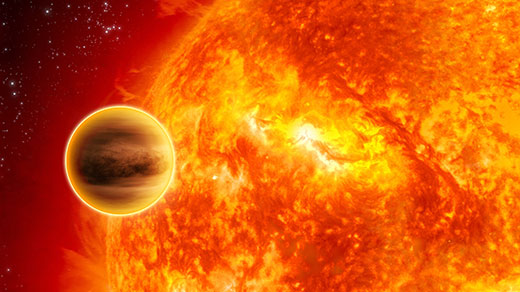What's up in
Physics
Latest Articles
Physics Nobel Honors Early Universe and Exoplanet Discoveries
The astronomers Michel Mayor and Didier Queloz won half of the prize for their 1995 discovery of a Jupiter-like planet orbiting a nearby star. The cosmologist James Peebles won the other half for work exploring the structure of the universe.
Artificial Intelligence Takes On Earthquake Prediction
After successfully predicting laboratory earthquakes, a team of geophysicists has applied a machine learning algorithm to quakes in the Pacific Northwest.
Long-Lived Stellar Blast Kindles Hope of a Supernova We’ve Never Seen Before
A giant star’s death throes may offer the first evidence of a pair-instability supernova, and a glimpse of the first stars in the universe.
Physicists Finally Nail the Proton’s Size, and Hope Dies
A new measurement appears to have eliminated an anomaly that had captivated physicists for nearly a decade.
Where Quantum Probability Comes From
There are many different ways to think about probability. Quantum mechanics embodies them all.
Are We All Wrong About Black Holes?
Since the 1970s, physicists have described black holes using borrowed versions of the laws of thermodynamics. But are black holes really thermodynamic systems? Craig Callender worries that the analogy has been stretched too far.
Strange Metal-like Bonds Discovered in Customized Crystals
While studying materials made from DNA-coated nanoparticles, researchers found a new form of this matter: lattices in which smaller particles roam like electrons in metallic bonds.
A Black Hole So Big It ‘Should Not Exist’
Researchers have confirmed rumors of a black hole collision that challenges our ideas about how black holes form.
Ann Nelson Took On the Biggest Problems in Physics
The theoretical particle physicist Ann Nelson, who died on August 4 at age 61, was a font of brilliant ideas and a champion of ending discrimination in the field.








